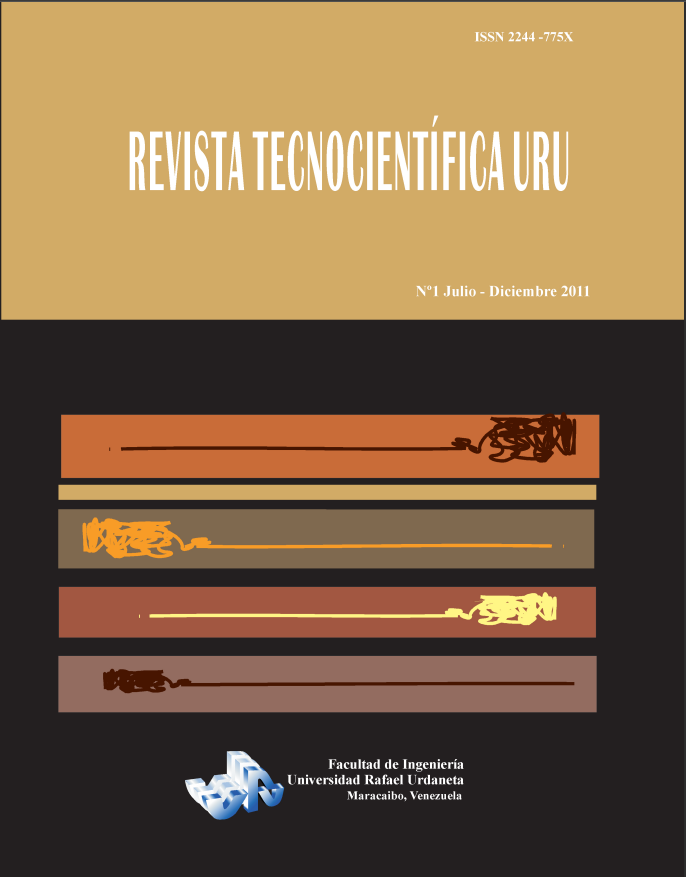Biodegradación de queroseno por cultivos de bacterias aisladas de una fosa petrolera en Venezuela
DOI:
https://doi.org/10.5281/zenodo.15740671Palabras clave:
Cultivos bacterianos, biodegradación, queroseno, fosa petrolera, biorremediaciónResumen
Se evaluó la producción de proteínas, biodegradación de queroseno al 0,5% y al 1,0%, y el crecimiento de bacterias aisladas de una fosa petrolera venezolana, en cultivos axénicos y mixtos, usando medio mínimo mineral con queroseno. Las bacterias se identificaron taxonómicamente como: Yersinia rohdei (K6), Pantoea agglomerans (K3), Sphingobacterium thalpophilum (K2) y Actinobacillus capsulatus (H7), alcanzando el siguiente orden en cuanto a crecimiento poblacional: K3>cultivo mixto>H7>K6> K2, en queroseno al 0,5%. Mientras que, en queroseno al 1,0%, hubo el mejor crecimiento, para: cultivo mixto> K2> K6> H7>K3. En promedio, el mayor contenido de proteínas se encontró al 1,0% de queroseno en Sphingobacterium thalpophilum (K2), con 135,92±0,64 μg/mL y en Actinobacillus sp. (H7) con 81,06±1,13 μg/mL, difiriendo significativamente con el resto de las cepas (p<0,05). En los cultivos con queroseno 0,5%, la remoción de hidrocarburos totales osciló entre 48,12% y 52,54%; en cambio al 1,0% estuvo entre 49,99% y 60,00%. Los hallazgos permiten recomendar el uso de las cepas bacterianas en cultivos axénicos y mixtos como modelos biológicos para estudios sobre biodegradación de derivados de petróleo y biorremediación de fosas de residuales petroleros.
Descargas
Referencias
Adebusoye S. A., Ilori M. O., Amund O. O., Teniola O. D., Olatope S. O., Microbial degradation of petroleum hydrocarbons in a polluted tropical stream. World Journal of Microbiology and Biotechnology, Vol. 23, No 8, (2007), 1149-1159.
Al-Mailem D. M., Sorkhoh N. A., Salamah S. S., Eliyas M., Radwan S. S., Oil bioremediation potential of Arabian Gulf mud flats rich in diazotrophic hydrocarbon-utilizing bacteria. International Biodeterioration and Biodegradation, Vol. 64, No 3, (2010), 218-225.
APHA, AWWA and WEF., American Public Health Association, Standard methods for examination of water and wastewater. 20th Edition, Washington DC, USA (1998).
Araujo I., Gómez A., Barrera M., Angulo N., Herrera L. Surfactantes biológicos en la biorremediación de aguas contaminadas con crudo liviano. Vol. 33, No 4, (2008), 245-250.
Atlas R., Bartha, R., Ecología Microbiana y Microbiología Ambiental, (4ed.), Editorial Pearson Educación, S.A., Madrid, España, (2002),509-586.
Bertrand J. C., Rambeloarisoa E., Rontani J. F., Giusti G., Mattei G., Microbial degradation of crude oil in sea water in continuous culture, Journal of Biotechnology Letters, Vol. 5 No 1,(2005), 567-572.
Culshaw F., Fosas tóxicas en Venezuela: ¿Es factible una limpieza total?, VenEconomía Mensual, Vol. 23, No 4, (2006), 9-11.
Escapa I. F., Del Cerro C., García J. L, Prieto M. A. The role of GlpR repressor in Pseudomonas putida KT2440 growth and PHA production from glicerol, Environmental Microbiology, Vol. 5, (2013), 93-110.
Farmer J., Boatwright K., Janda M. Enterobacteriaceae: Introduction and Identification, En: Murray P., Baron E., Jorgensen J., Landry M. L., Pfaller M. A., Manual of Clinical Microbiology, 9th Edition, Volume 1, ASM Press, USA, (2007), 649-802.
Hebert D., Phipps P. J., Strange, E., Chemical analysis of microbial cells, Methods in Microbiology, Vol. 5B, (1971), 209- 343.
Holt J. G., The shorter Bergey ́s Manual of Determinative Bacteriology, (8ed), The Willians & Wilkings Company, Baltimore, USA, (1984), 1-184.
Ito H., Hosokawa R., Morikawa M., Okuyama H., A turbine oil-degrading bacterial consortium from soils of oil fields and its characteristic, International Biodeterioration and Biodegradation, Vol. 61, No 3, (2008), 223-232.
Jobson A., Cook F. D., Westlake D. W. S., Microbial utilization of crude oil, Applied Microbiology, Vol. 23, No 6, (1972), 1082-1089.
Karamalidis A. K., Evangelou A. C., Karabika E., Koukkou A. I., Drainas C., Voudria E., A. Laboratory scale bioremediation of petroleum-contaminated soil by indigenous microorganisms and added Pseudomonas aeruginosa strain, Spet. Bioresource Technology Vol. 101, No 16, (2010), 6545-6552.
Lowry O. H., Rosebrough N. J., Farr A. L, Randall R. J., Protein measurement with the Folin phenolreagent. Journal of Biology and Chemistry, Vol. 193, No 1, (1951), 265- 275.
Madigan M., Martinko J., Parker J., Brock Biología de los Microorganismos, (10ed.), Ediciones Prentice Hall. Inc., Madrid, España, (2004), 149-588.
Mata S., Gómez M., Muñoz F., Carballo M., González S., Montes T., Landaeta C, Hernández C., Uzcategui C., Guía de trabajo práctico de Microbiología, Ediciones de la Biblioteca-EBUC, Caracas, Venezuela, (2003), 47-110.
MacFaddin J., Pruebas bioquímicas para la identificación de bacterias de importancia clínica, (3ed.), Editorial Anamericana, Madrid, España, (2004), 451-744.
Muckian L. M., Grant, R. J., Clipson N. J. W., Doyle E. M., Bacterial community dynamics during bioremediation of phenanthrene and fluoranthene-ammended soil, International Biodeterioration and Biodegradation, Vol. 63, No 1, (2009), 52-56.
Nocentini M., Pinelli D., Fava F., Bioremediation of a soil contaminated by hydrocarbon mixtures: the residual concentration problem, Chemosphere, Vol. 41, (2000), 1115- 1123.
Obayori, O. S., Adebusoye, S. A., Adewale, A. O., Oyetibo, G. O., Oluyemi, O. O., Differential degradation of crude oil (Bonny Light) by four Pseudomonas strains, Journal of Environmental Sciences, Vol. 21, No 2, (2009), 243-248.
Sarma, P., Bhattacharya B., Krishnan S., Lal B., Degradation of polycyclic aromatic hydrocarbons by a newly discovered enteric bacterium, Leclercia adecarboxylata. Applied and Environmental Microbiology, Vol. 70, No 5, (2004), 3163–3166.
Wolicka D., Suszeck A., Borkowski A., Bielecka A., Application of aerobic microorganisms in bioremediation in situ of soil contaminated by petroleum products, Bioresource Technology, Vol. 100, No 13, (2009), 3221-3227.
Wongsa P., Tanaka M., Ueno A., Hasanuzzaman M., Yumoto I., Okuyama H., Isolation and characterization of novel strains of Pseudomonas aeruginosa and Serratia marcescens possesing high efficiency to degrade gasoline, kerosene, diesel oil, and lubricating oil, Current Microbiology, Vol. 24, (2004), 415- 422.
Descargas
Publicado
Número
Sección
Licencia
Derechos de autor 2013 @copyright

Esta obra está bajo una licencia internacional Creative Commons Atribución-CompartirIgual 4.0.






